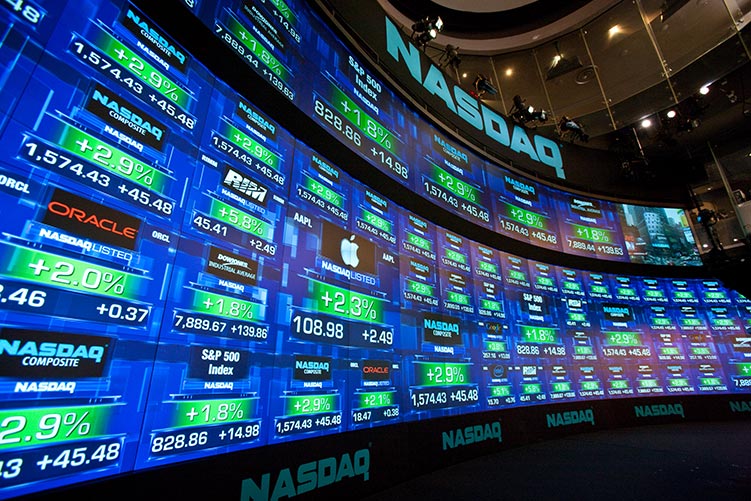The Surprising Vitality and Resilience of NASDAQ
 At the close of yesterday’s business, the tech-heavy NASDAQ index was just about forty points shy of hitting its all-time record high of 5,048.62 attained on March 10, 2000 (with an intraday peak of 5,132.52). The Dow Jones Industrial Index moved into positive territory in early 2012 and has since added another 54.7%, while the S&P500 crossed the line a year later and went on to gain 37.8%.
At the close of yesterday’s business, the tech-heavy NASDAQ index was just about forty points shy of hitting its all-time record high of 5,048.62 attained on March 10, 2000 (with an intraday peak of 5,132.52). The Dow Jones Industrial Index moved into positive territory in early 2012 and has since added another 54.7%, while the S&P500 crossed the line a year later and went on to gain 37.8%.
Celebrating a bull market lasting six years, the NASDAQ is, however, still a long way from recouping the losses incurred after the Internet bubble burst fifteen years ago once inflation is figured in. Corrected for inflation, the Dow is up 13.8% since its 2000 high, the S&P500 breaks about even at plus 1.4%, while the NASDAQ is still down 27.6%.
The good news is that tech companies have not yet run out of steam. In its latest evaluation of the broader market, BlackRock – the world’s largest asset manager with close to $4.6tn in its portfolio – points out that four tech giants (Apple, Cisco, Google, and Microsoft) between them have about $360bn in cash reserves. The deep pockets of this quartet contain fully a quarter of the total stash available to US corporations.
“Celebrating a bull market lasting six years, the NASDAQ is, however, still a long way from recouping the losses incurred after the Internet bubble burst fifteen years ago once inflation is figured in.”
BlackRock analysts consider that tech stocks “still have some way to go” given that they represent a growth sector in a still maturing economic cycle. Also, today’s P/E (price-earnings) ratios are decidedly modest as the table below illustrates:
| Company | 2000 P/E ratio | 2015 P/E ratio |
| Apple | – | 15 |
| Cisco | 127 | 13 |
| – | 19 | |
| Intel | 43 | 14 |
| Microsoft | 57 | 16 |
After the market collapse of 2000 many pundits expressed doubt that the NASDAQ would regain the lost ground in their lifetimes. The low point was reached in October 2002 when the index has shrivelled to barely 1,114.
Interestingly, NASDAQ’s buoyancy is even more pronounced if the index is purged of Internet-related stocks. The exchange has profited handsomely from the strong performance of the US auto industry as carmakers try to lure buyers with ever-more sophisticated technology supplied by NASDAQ-listed companies. Biotech stocks also seem to be doing exceedingly well.
You may have an interest in also reading…
Navigating the Future: Calculo’s Journey in Complex World of Commodity Trading
The challenges, requirements, and joys of the sector keep Calculo Capital’s CEO focused… In the rapidly evolving landscape of commodity
London Stock Exchange (LSE) Facing Competition from NYSE Euronext
London Stock Exchange (LSE) is facing stiff competition from NYSE Euronext, which have already captured its first client to switch
Compelling Case for Making Guinea the Destination for Your Next Investment
When you consider the appeals and advantages of the West African country, think beyond extractives… World renowned as the home



















































































